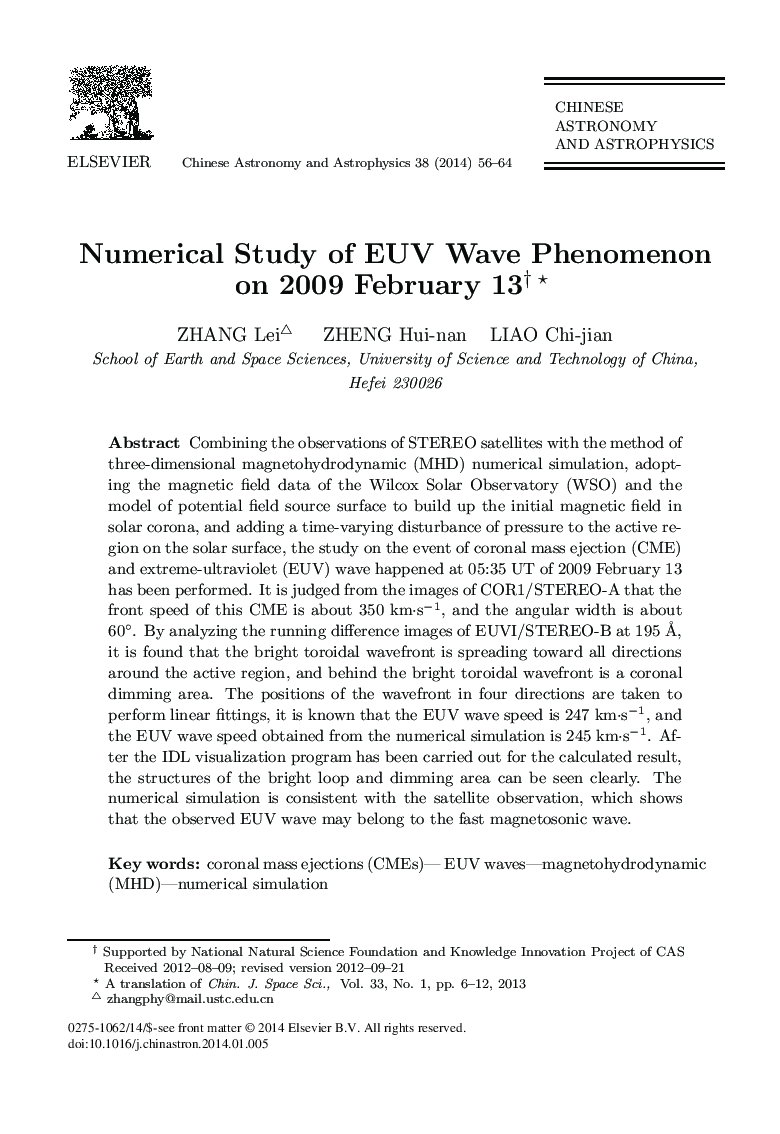| Article ID | Journal | Published Year | Pages | File Type |
|---|---|---|---|---|
| 1771722 | Chinese Astronomy and Astrophysics | 2014 | 9 Pages |
Combining the observations of STEREO satellites with the method of three-dimensional magnetohydrodynamic (MHD) numerical simulation, adopt- ing the magnetic field data of the Wilcox Solar Observatory (WSO) and the model of potential field source surface to build up the initial magnetic field in solar corona, and adding a time-varying disturbance of pressure to the active re- gion on the solar surface, the study on the event of coronal mass ejection (CME) and extreme-ultraviolet (EUV) wave happened at 05:35 UT of 2009 February 13 has been performed. It is judged from the images of COR1/STEREO-A that the front speed of this CME is about 350 km·s−1, and the angular width is about 60∘. By analyzing the running difference images of EUVI/STEREO-B at 195 ˚A, it is found that the bright toroidal wavefront is spreading toward all directions around the active region, and behind the bright toroidal wavefront is a coronal dimming area. The positions of the wavefront in four directions are taken to perform linear fittings, it is known that the EUV wave speed is 247 km·s−1, and the EUV wave speed obtained from the numerical simulation is 245 km·s−1. After the IDL visualization program has been carried out for the calculated result, the structures of the bright loop and dimming area can be seen clearly. The numerical simulation is consistent with the satellite observation, which shows that the observed EUV wave may belong to the fast magnetosonic wave.
